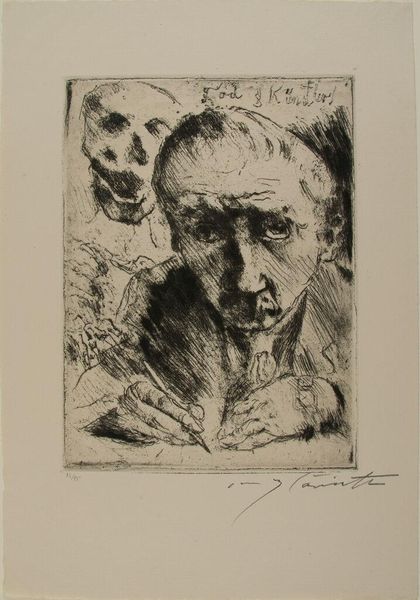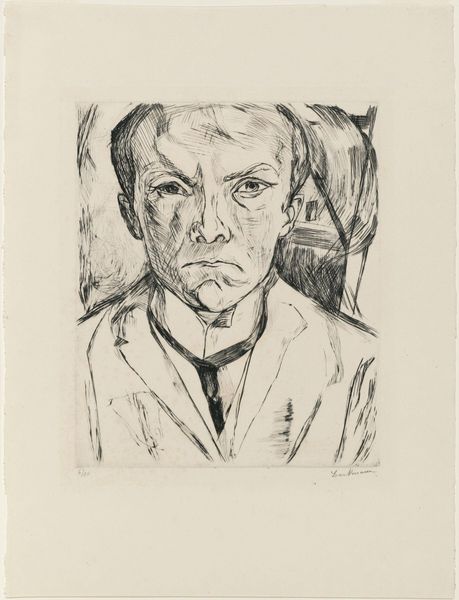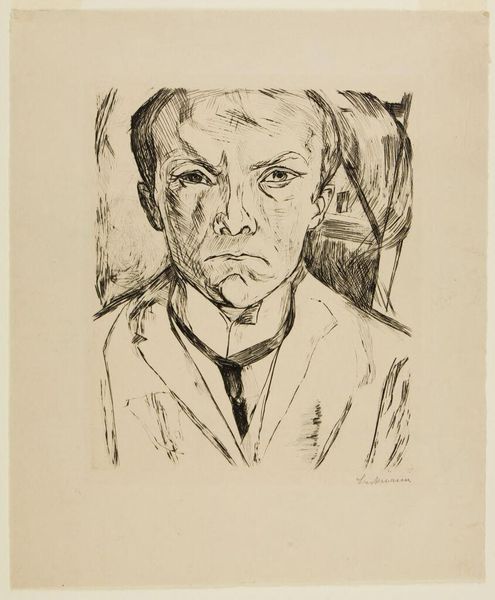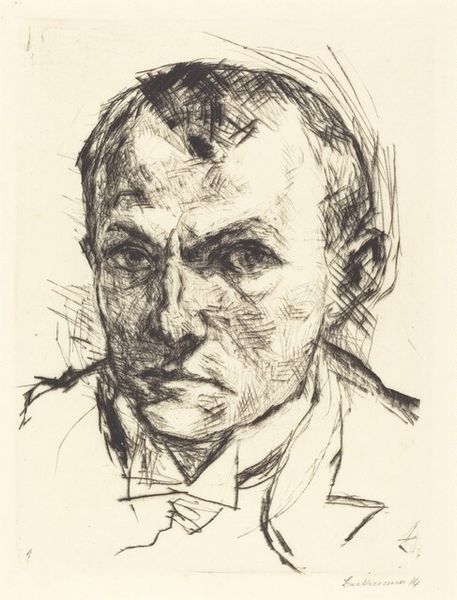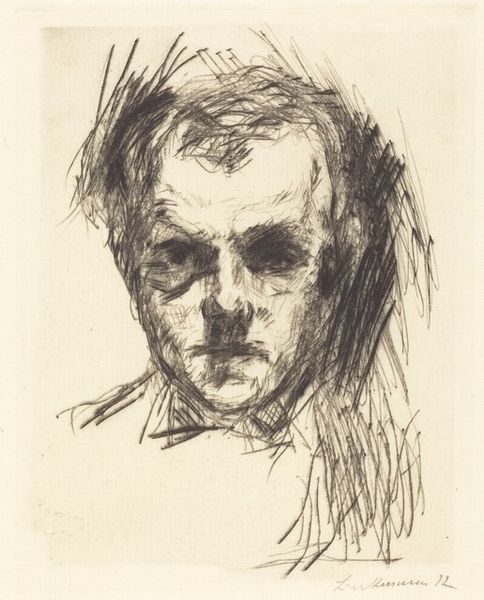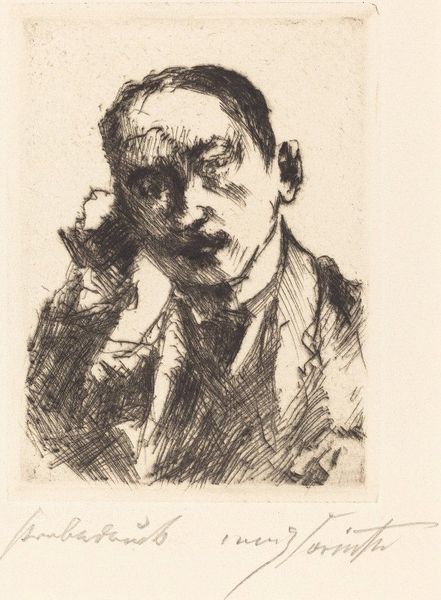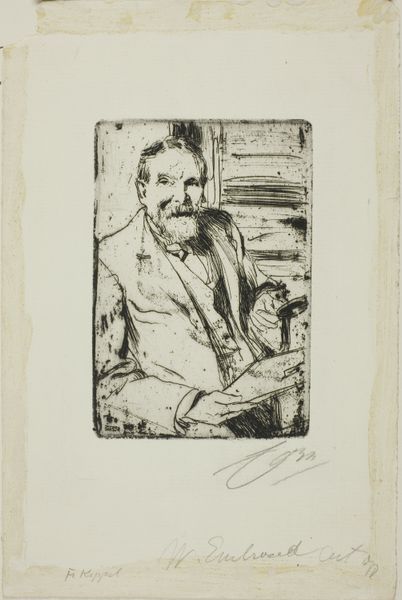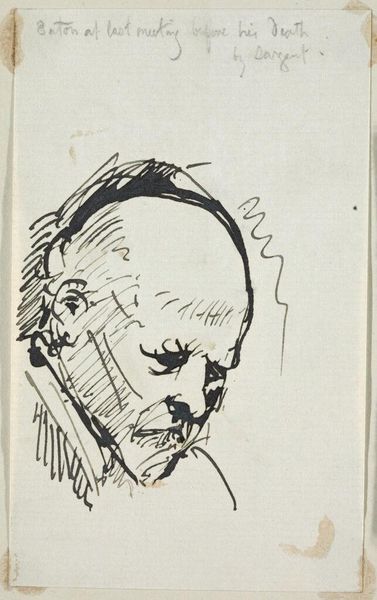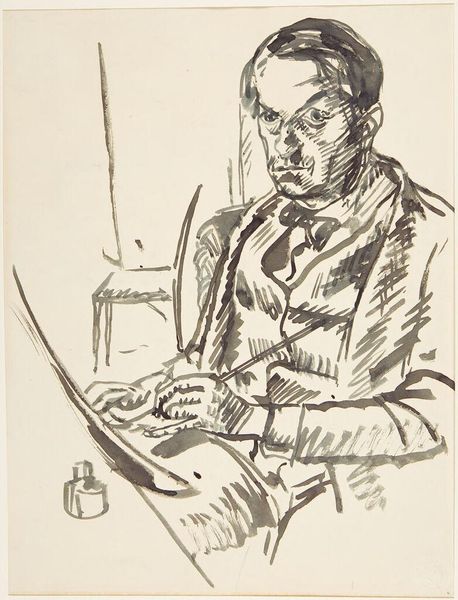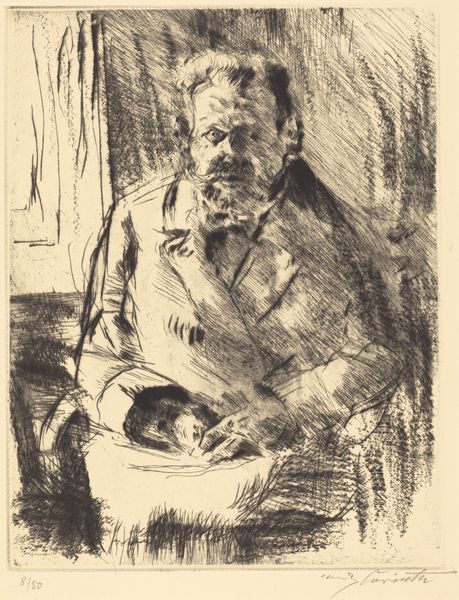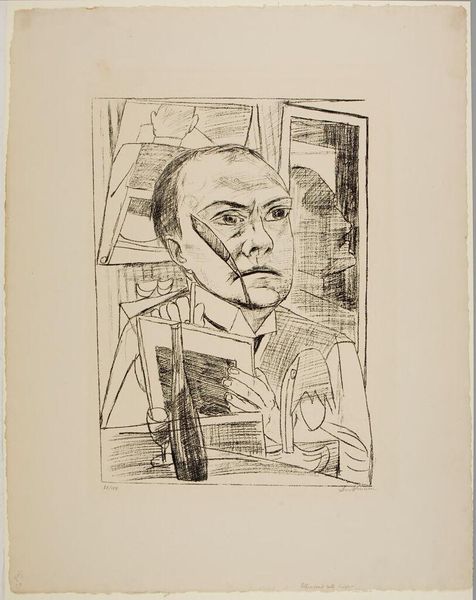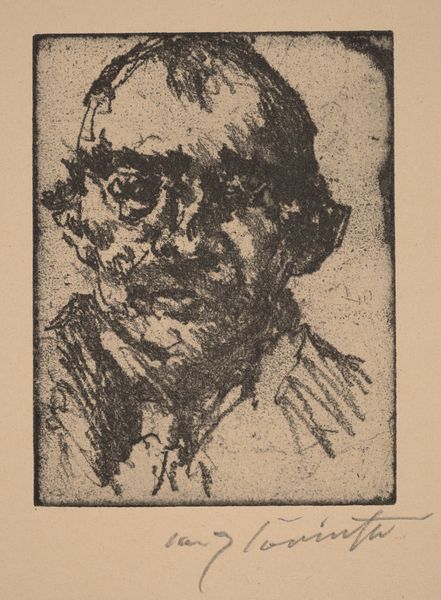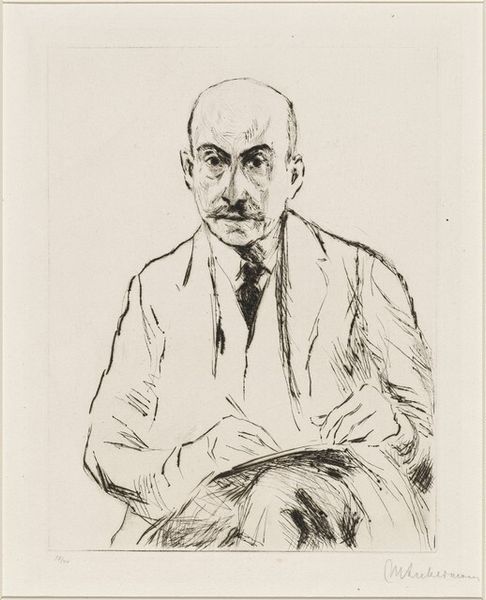
drawing, etching
#
portrait
#
drawing
#
self-portrait
#
etching
#
german-expressionism
#
expressionism
Copyright: Public Domain: Artvee
Curator: Before us is Lovis Corinth's 1920 etching, "Self-Portrait." Look at the density of the lines! Editor: Yes, my immediate impression is one of unease. The subject's gaze is direct, almost confrontational, and the heavy shadows add to a feeling of emotional turbulence. Curator: Precisely. Notice how the cross-hatching and varied line weights not only define form but also imbue the composition with a distinct dynamism, almost agitation. The work shows a mature stage of Expressionism, where representation becomes secondary to conveying raw feeling. Editor: The way he holds the tools of his trade – etching plate and needle, is rather poignant. There is a legacy contained within those implements. This work speaks of the weight of artistic responsibility and perhaps even the anxiety of influence. Does he see himself continuing a lineage, or forging his own path? Curator: His position in the composition invites a comparison with Durer's 1500 self-portrait; however, while Durer constructed himself as a second Christ figure, Corinth seems to present the human form collapsing into lines of dark nervous energy. Editor: That collapse, as you describe it, makes me think about the era. Germany in 1920 was still reeling from the First World War, amidst social and economic turmoil. This portrait could be seen as an emblem of that era's collective angst, reflected in the artist's own image. The figure seems to struggle beneath the symbolic weight of a fractured world. Curator: An excellent point. The stylistic choices and that dark undertone create a certain atmosphere that embodies psychological intensity. This etching encapsulates something profound about the man and the epoch he inhabited. Editor: It is clear how the artistic and personal merge within the symbolic space of this print; its resonance lingers long after one looks away.
Comments
No comments
Be the first to comment and join the conversation on the ultimate creative platform.
